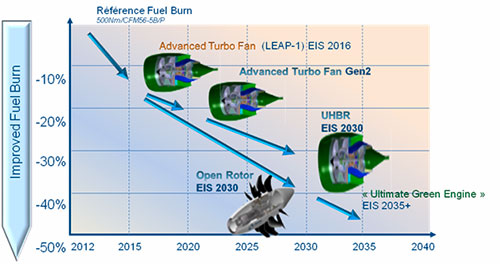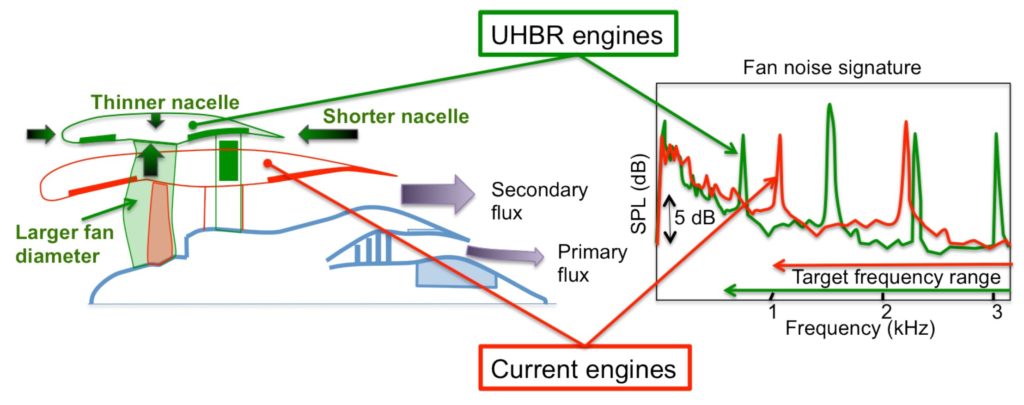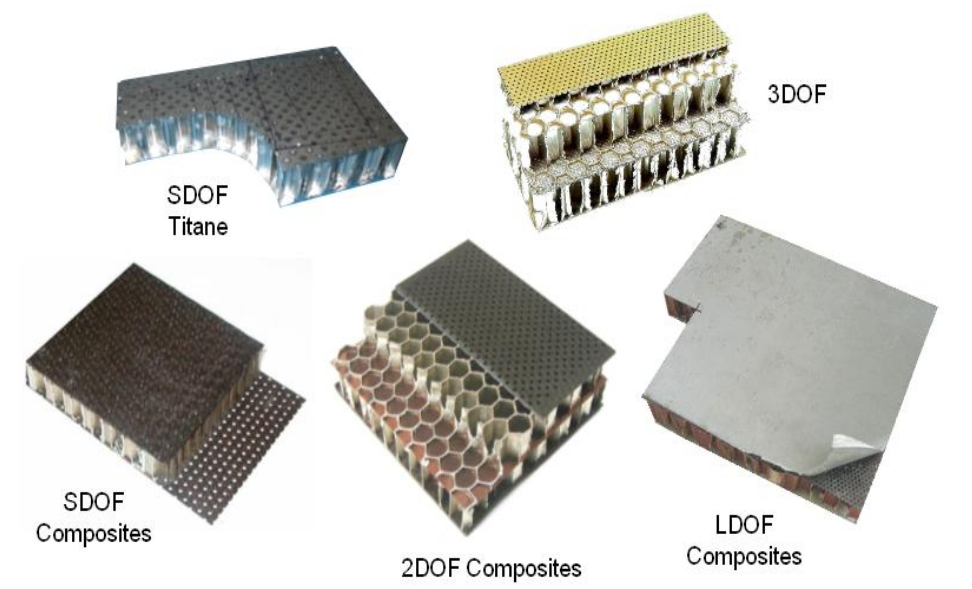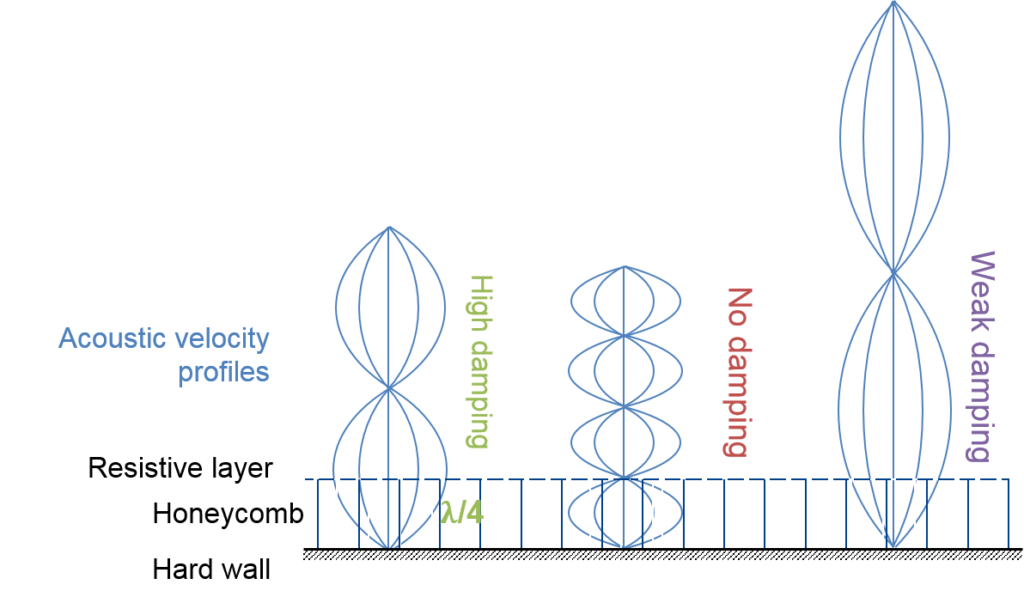Challenges
To the preceding section: Context
The problem: Ultra High Bypass Ratio Engines noise
Future aircraft engines architectures mainly driven by fuel consumption and propulsion efficiency. In this perspective, Ultra High Bypass Ratio (UHBR) Engine technologies are foreseen as the future of propulsion systems. Among the characteristics of these novel engine architectures, the following should be highlighted:
- larger fans than former concepts
- shorter nacelles than former concepts

These new configurations present new challenges in terms of noise signature:
- More low-frequency components
- Less space for acoustic treatments (liners)

Conventional solutions: Acoustic liners
Conventional acoustic treatments are designated as acoustic liners. They basically consist of bulk honeycomb structures, mostly effective at one (or 2) selected frequencies, and their size limits their efficiency in the low-frequency range, owing to the “quarter-weavelength rule”. This physical rule basically states that, in order to address a given frequency, an acoustic absorber should by as thick as 1/4 of the corresponding wavelength.
For example, to damp at 500 Hz tone, an acoustic treatment should be as thick as 17 cm, which is hardly compatible with the space allowed in aircraft engine nacelles.

Conventional acoustic liners 
quarter-wavelength rule
Engine noise reduction efficiency also depends on the surface of absorbers. In the case of UHBR engines, the available treatment surface is likely to be significantly reduced compared to the existing nacelles. Therefore, another challenge will be to tackle the limited treatment surface by innovative solution in terms of sound dissipation.
Breakthrough solutions: active acoustic liners
In order to meet the required noise performance at engine level, next generation acoustic treatments should:
- achieve significant noise reduction with limited surface
- break the quarter-wavelength rule (physical limit towards low-frequency)
Moreover, in order to outperform conventional acoustic treatments, they should:
- adapt their performances in real-time to varying engine speeds
- showcase actual geometry configurations (full 3D circumferential geometries)
To the next section: Objectives
